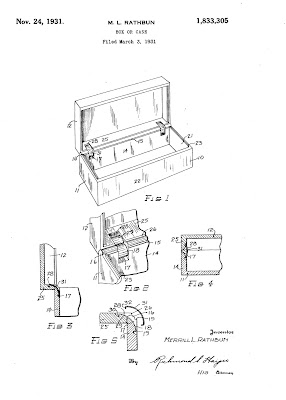I started collecting Hamilton watches in 1985. My dad, a third-generation jeweler, provided me with much of the information about the Hamilton watches I collected. I usually consulted him before I purchased a watch.
My family’s jewelry stores sold various watch bands for several decades. Once, I overheard a conversation among family members about Hamilton making the best watches in the US rivaling the Swiss.
As a journalist, I developed a core competence in research and apply that skill here. I did not think I would need to dig deep when writing about Hamilton’s plastic watch boxes. As it turns out, Hamilton didn’t use plastic. Instead, they used the first synthetic plastic.
Hamilton’s celluloid boxes caught my eye but the ones I purchased, in the beginning, disappointed me. I paid too much for them. The pads had worn down exposing the raw wire. Before I bought another, I felt the need to know more.
Before continuing, I must add a caveat. Please don’t consider me an expert on esoteric matters relating to Hamilton watches, especially boxes used for packaging and,or presentation. I gather information and report it without much bias. If you find it useful, then consider it a starting point.
Boxes Invented and Patented by Merrill Rathbon, New York
Rathbun received two patents for the boxes in 1931 and 1934, respectively. Rathbon stated his invention had uses in the manufacture of small boxes are cases for use as containers for jewels, powder, razors, watches, candy, etc.
Hamilton’s management chose to use Rathbon’s invention for their boxes. While I’ve seen some references to the use of these boxes prior to 1931, it seems like those authors have made a leap of faith.
If you search long enough you might also see some references to Armstrong Clark Company as the manufacturer of these boxes. Common sense tells me that Hamilton would not have made boxes in their plant. While I haven’t found a credible reference to the actual manufacturer of Hamilton’s boxes, some well-meaning forum posters have claimed that Armstrong Cork Company made the boxes. Several searches in Armstrong’s archives hasn’t indicated an association with Hamilton other than executives attending the same cocktail party.
Materials Used in making the Shell
In several eBay listings, I have seen claims that these boxes were made of Bakelite. In fact, the maker of the boxes used celluloid.
A semantical argument exists about the first synthetic plastic. A majority of commentators claim that celluloid predated Bakelite as the first synthetic plastic. Others contend Bakelite is purer synthetic plastic. With regard to this discussion, who cares which came in first.
If the maker used bakelite, you would find the logo somewhere on a box. The logo looks similar to the following image.
 |
| Bakelite Trademark |
The only information I have found on these boxes remains the to patent numbers. Also, if you are familiar with synthetic plastics you could tell the difference.
Critics claim Hamilton used this box between 1934 and 1941. They also claim that Armstrong Cork made this item in Lancaster. Frankly, I don’t care who made the boxes. I haven’t found any information verifying this empirically.
In the beginning of my foray, I bought 8 1/4 inch women’s boxes advertised as men’s. Hamilton made 10 1/4 inch boxes for men’s wristwatches. I have a hard time finding men’s size boxes.
Hamilton used celluloid boxes from approximately 1934 to 1954.
Where are they worth
I believe they are worth what you’re willing to pay. I have one listed for $55. I believe it’s worth more as it took me so long to find.
It might still be available when you read this article. If not, I hope you find this information useful in making an informed buying choice.
On eBay:
Hamilton 1934 – 1941 Celluloid Box
Search eBay for Hamilton Celluloid Boxes
Copyright 2006-2017 | All Rights Reserved

